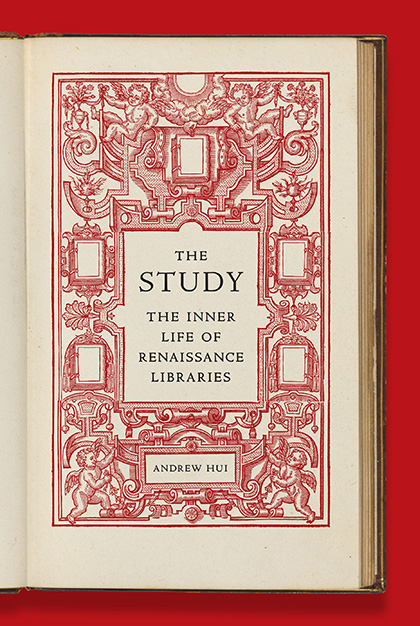Critical Inquiry Critical Inquiry
Andrew Hui. The Study: The Inner Life of Renaissance Libraries. Princeton, N.J.: Princeton University Press, 2025. 336 pp.
Review by Andreas Tranvik
31 July 2025
There is an almost tongue-in-cheek quality to the title of Andrew Hui’s new monograph. The Study, that is, is a study of the study. Making proper use of the word’s polysemic nature, its variations as both verb and noun, this original and engaging book takes as its focus a place of utmost importance for scholars and intellectuals, past and present, namely “the personal workspace where we think, read, and write” (p. ix). Intellectual life, however social our efforts, is heavily dependent on such solitary space—the rooms of our own, as per Virginia Woolf’s dictum. Not only do we think with texts, as another saying goes, but we tend to think with and within our studies, those often ordinary yet somehow remarkable worlds of books and belongings that shape individual and collective imaginations. A study is always a window onto its user(s), and a study thereof should therefore be taken as an invitation to self-reflection. This, indeed, is the result of Hui’s appealing hermeneutical approach, for he illuminates our understanding of books, libraries, and learning in early modernity, the historical epoch under examination, whilst also directing “a critical gaze at our own day-to-day practice of scholarly work” in twenty-first-century academia (p. 14).
The specific incarnation of the study foregrounded in Hui’s argument is nevertheless the Renaissance studiolo. Here, according to Hui, one encounters the origins of the study as we know it, as well as of privacy, its mutually presupposing condition and idea. The studiolo—this eminent site of literary and epistemic practices for figures from Petrarch to Michel de Montaigne and beyond—is shown throughout the book to be markedly Janus-faced. It functions, in Hui’s theoretical and historical telling, as Bakhtinian chronotope, “an ingathering of time and space,” but also as Derridean “pharmakon—at once remedy, poison, scapegoat” (pp. 3, 236). The psychology of the studiolo is ambiguous, double-edged; it tends simultaneously toward bibliophilia and bibliomania, the two conflicting categories constituting the dialectical and formal structure of The Study. For as Hui notes in an intriguing reading of Christopher Marlowe’s Doctor Faustus (1592), “there was a danger inherent in the studiolo: the soul left alone was an invitation for the devil to come” (p. 219). Solitude can turn into loneliness, and the mindful devotion to books into mindless devouring. As much other recent scholarship has demonstrated, the history of knowledge is always entangled with the history of ignorance.[i] When studying epistemic and epistemological matters in history, one should therefore also contend with agnotology.[ii] By the same token, Hui considers bibliophilia and bibliomania in conjunction, as two sides of the very same coin. The dark side of knowledge—or, at times, the comical—is particularly present in the excellent second half of the book, where literary representations of bibliomania in, for example, Miguel de Cervantes, François Rabelais, and William Shakespeare, are explicated in great detail. The moral of the story: the studiolo is to be both cherished and feared.
[i] See, for example, Vera Keller, The Interlopers: Early Stuart Projects and the Undisciplining of Knowledge (Baltimore, 2023).
[ii] Compare with Robert N. Proctor, “Agnotology: A Missing Term to Describe the Cultural Production of Ignorance (and Its Study),” in Agnotology: The Making and Unmaking of Ignorance, ed. Proctor and Londa Schiebinger (Stanford, Calif., 2008), pp. 1–33.

